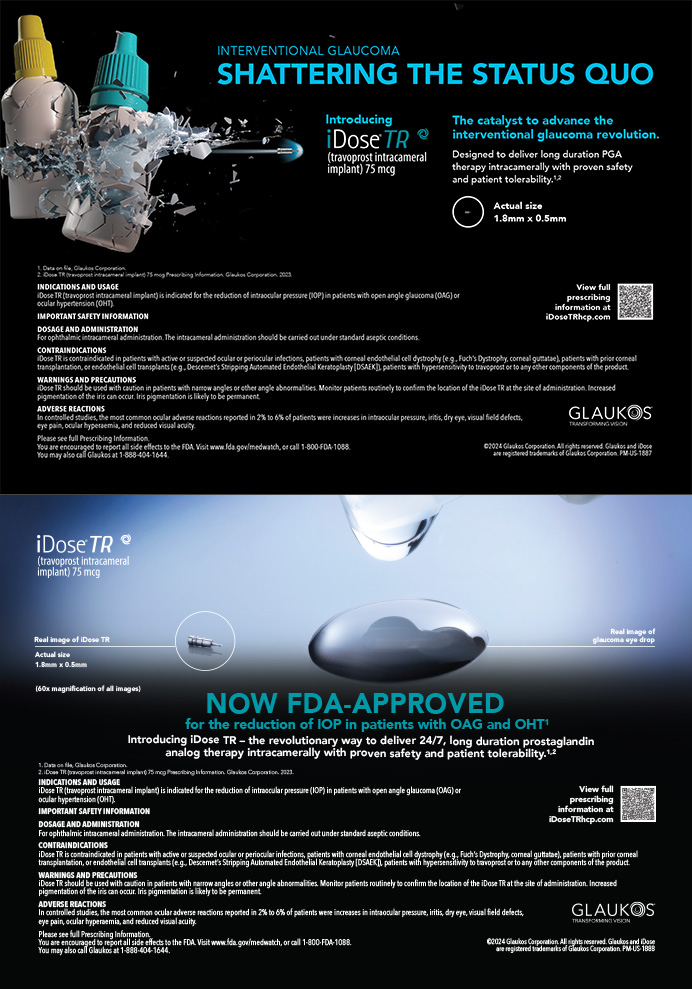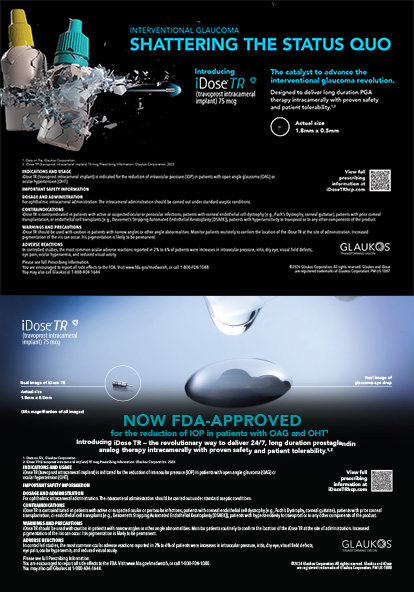Aberrometry is the measurement of the imperfections in an optical system. This technique has been used for years, particularly in astronomy, to develop accurate optical systems. Aberrometry was introduced to the vision sciences in the mid-1990s, and the first commercially available clinical aberrometer was the COAS (Complete Ophthalmic Analysis System) from AMO WaveFront Sciences, LLC (Albuquerque, NM), released in 2000. The original aberrometers were based on the Shack-Hartmann principle, a technique developed by Johannes Hartmann in 1900 and modified by Shack and Platt in the late 1960s. Numerous other methodologies and applications have since arisen.
THERAPEUTIC ABERROMETERS
The widespread introduction of aberrometers into clinical ophthalmology occurred primarily in association with the development and approval of wavefront-guided laser treatments. Theo Seiler, MD, PhD, performed the first such procedure in the world using the WaveLight platform (WaveLight Laser Technologie AG, Erlangen, Germany) in 1999.
In the United States, the LADARWave aberrometer (built by Carl Zeiss Meditec, Inc., Dublin, CA) was approved for use in 2002 with the LADARVision excimer laser (both products from Alcon Laboratories, Inc., Fort Worth, TX). The WaveScan Wavefront System was approved in 2003 for use with the Visx Star S4 excimer laser (both products from Abbott Medical Optics Inc., Santa Ana, CA). These aberrometers are based on Shack- Hartmann principles and use Zernike analysis to express the results in both mathematical and graphic terms. The WaveScan currently uses Fourier algorithms to analyze data and improve precision. The LADARWave, although no longer commercially available, is still used by many clinicians for diagnostic evaluations.
The Allegro Analyzer, part of the WaveLight Allegretto line (Alcon Laboratories, Inc.), uses the Tscherning principle to obtain wavefront data and expresses the results in Zernike polynomials. Shack-Hartmann aberrometers send a single light beam into the eye and then analyze the outgoing light bundle. In contrast, Tscherning aberrometers project a spot pattern of 168 points into the eye and analyze the image of the spot pattern on the retina. According to Alcon Laboratories, Inc., the advantage of the Tscherning method for wavefront-guided laser treatments is that it avoids inaccurate results from media opacities, which can produce false positives with a Shack-Hartmann device. The vast majority of aberrometers in use with laser systems employ the Shack- Hartmann principle.
DIAGNOSTIC DEVICES
The proliferation of devices associated with wavefrontguided laser procedures allowed ophthalmologists to examine numerous eyes in association with various refractive treatments, IOLs, and naturally occurring pathology. As a result, surgeons came to appreciate the diagnostic value of aberrometry as well as its limitations. A number of devices have been developed using various strategies to increase the sensitivity, validity, and range of wavefront measurements.
The Nidek-OPD Scan II (Nidek, Inc., Fremont, CA) utilizes the principle of skiascopic phase difference to measure refractive error. The unit scans the retina with an infrared slit beam, and the reflected light is captured by an array of rotating photo detectors over a 360º area. In essence, the device produces a highly detailed retinoscopic map of the refractive state of the eye from numerous points on the cornea. The Nidek-OPD Scan II provides information on corneal topography, wavefront measurements, autorefraction, keratometry, and pupillometry. By subtracting the corneal refractive power from the total optical path difference or wavefront error, the unit is able to generate an internal optical path difference reflecting the optical quality and refractive state of the crystalline lens and internal ocular media. The technique functions over a wide range of refractive errors and is capable of measuring highly aberrated eyes.
According to literature from AMO WaveFront Sciences, LLC, the current version of the COAS is the world’s highest-resolution wavefront aberrometer. The same literature states that, based on patented Shack- Hartmann wavefront-sensing technology, COAS provides unparalleled accuracy, range, and resolution for wavefront-based ophthalmic metrology and gives the physician an ultradetailed map of the eye. The COAS-VR uses both dynamic and static wavefront measurements, making it capable of measuring accommodation. Realtime measurements allow users to analyze aberrations in many forms, including displays of cylinder, higher-order aberrations, Zernike polynomials, pupillary size, highresolution wavefront maps, power maps, gradient maps, modulation transfer function, point spread function, and visual acuity simulation.
The iTrace (Tracey Technologies, Houston, TX) is unique in eye care diagnostics: it measures quality of vision and visual function using a fundamental thinbeam principle of optical ray tracing. The iTrace sequentially projects 256 near-infrared laser beams into the eye to measure forward aberrations; it processes data point by point. This system provides autorefraction, corneal topography, ray-tracing aberrometry, pupillometry, and autokeratometry. As with the Nidek-OPD II, the iTrace can distinguish internal aberrations from surface or corneal aberrations.
The Maxwell Optical Wavefront Aberrometer (Ziemer Ophthalmic Systems AG, Port, Switzerland) measures a wide range of functions. It is designed to effectively assess all of the wavefront aberrations present in a subject’s eye. According to the company, this device offers the widest wavefront diagnostic range and functions on more than 99% of subjects.
INTRAOPERATIVE ABERROMETRY
The newest and possibly most significant use of aberrometry is intraoperatively. ORange (WaveTec Vision, Aliso Viejo, CA) is the first intraoperative wavefront aberrometer registered with the FDA for cataract surgery. Consisting of an optical head attached below the operating microscope and the ORange processor, the device uses a technology known as Talbot-Moiré interferometry to analyze the wavefront and produce the refractive value of the eye (Figure 1).
The first generation of ORange was only capable of making pseudophakic measurements, but the second generation takes both pseudophakic and aphakic measurements. Using the aphakic measurement as the primary data point, the device provides guidance on IOL power selection—of particular interest in eyes that have undergone refractive surgery. Additionally, ORange assists with the orientation of toric IOLs and the placement of limbal relaxing incisions in phakic, aphakic, and pseudophakic eyes.
As an early adopter of this technology, I have seen steady progress in the reliability of the primary data and the generation of IOL power calculations, especially in the difficult scenario of a patient with a history of refractive surgery. The results of ORange in postrefractive surgery patients compare favorably to those achieved using the methods in the ASCRS postkeratorefractive IOL calculator (Figure 2). My partners’ and my results have exceeded the global data, with a mean absolute value of the prediction error of 0.42 D ±0.33 and a range of 0.005 to 1.185 D. Anecdotally, the device has prevented several of our patients from receiving IOLs of the wrong power, and it has provided accurate confirmation of the power in many other cases.
Other intraoperative systems are in development but not yet available commercially. The Holos (Clarity Medical Systems, Inc., Pleasanton, CA) will reportedly supply real-time, continuous measurements of the eye’s refractive state.
CONCLUSION
Thanks to ongoing enhancements of hardware design and software development, the current generation of aberrometers has numerous investigational, diagnostic, and therapeutic applications. This technology contributes valuable information about the optical system of the eye that enhances physicians’ ability to deliver quality care to their patients.
Alan R. Faulkner, MD, is the founder of and is in private practice with Aloha Laser Vision in Honolulu, Hawaii. He is a paid member of the Refractive Clinical Advisory Board of Alcon Laboratories, Inc., but stated that he holds no financial interest in the products or other companies mentioned herein. Dr. Faulkner may be reached at (808) 792-3937; dralan@alohalaser.com.


